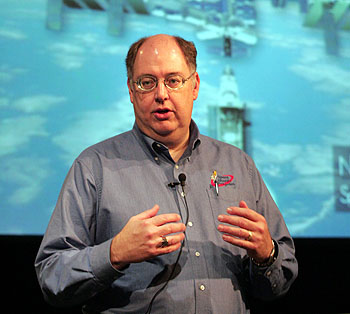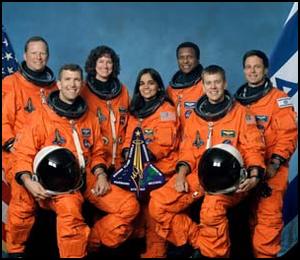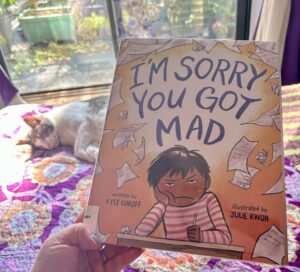We here at SorryWatch want to exalt the good, not just excoriate the bad. Here’s an apology that’s very, very good.
N. Wayne Hale was the launch integration manager at NASA in 2003, when the space shuttle Columbia exploded. After the disaster, he emailed the entire shuttle team, then made the email public.
(You can find the text online, but I’m quoting from the wonderful book Mistakes Were Made (But Not by Me): Why We Justify Foolish Beliefs, Bad Decisions, and Hurtful Acts by social psychologists Carol Tavris and Elliot Aronson.) Even though Hale actually had raised red flags before launch, he took full responsibility.
I had the opportunity and the information and I failed to make use of it. I don’t know what an inquest or a court of law would say, but I stand condemned in the court of my own conscience to be guilty of not preventing the Columbia disaster. We could discuss the particulars: inattention, incompetence, distraction, lack of conviction, lack of understanding, a lack of backbone, laziness. The bottom line is that I failed to understand what I was being told; I failed to stand up and be counted. Therefore look no further; I am guilty of allowing Columbia to crash.
Most people, Tavris and Aronson write, want to believe that they’re right, so they bend over backwards to make facts conform to their chosen version of reality. “The mind wants to protect itself from the pain of dissonance with the balm of self-justification,” they write, “but the soul wants to confess. To reduce dissonance, most of us put an enormous amount of mental and physical energy into protecting ourselves and propping up our self-esteem when it sags under the realization that we have been foolish, gullible, mistaken, corrupted, or otherwise human.” Hale didn’t do that. He owned the crisis.
Years later, he apologized again. When researching what exactly had gone wrong with Columbia, NASA decided that workers had improperly installed the foam insulation on the shuttle’s fuel tanks. But in December 2005, scientists discovered that the normal thermal cycles the fuel went through as the tank was filled could cause the foam to crack…but only when the tank was full. They’d never tested the foam with full tanks, only partially filled ones. The foam hadn’t been wrongly installed at all.
Hale writes on his fascinating blog:
I flew to New Orleans [the foam had been installed by workers at the Michoud Assembly Facility in Louisiana] within a few days, and called an all hands meeting where I publicly apologized to the foam technicians. They had not caused the loss of Columbia through poor workmanship. Those guys were reeling from the hurricane’s devastation to their homes and community, and has lived with nearly 3 years of blame. Thin comfort for me to apologize: so late, so little.
We worked feverishly to remove foam on foam wherever we could, minimize it where it could not be eliminated, and the following July we were ready to try again.
Discovery flew on July 4, 2006; no significant foam loss occurred.
I consider that to be the real return to flight for the space shuttle.
So were we stupid? Yes.
Can you learn from our mistake? I hope so.
So when you go to the Smithsonian and see Discovery there, think how lucky you are to see her whole, intact, and with her crews safely on the ground.
You see, this is how I found out that we were never really as smart as we thought we were.
Maybe that is a lesson that applies to you, too.
Indeed. Making mistakes is human, as Tavris and Aronson point out. Not wanting to admit our mistakes is also human. That’s precisely why so many of the crap apologies we analyze on this blog are crap: the apologizer evades the essential act of OWNING THE SIN. But Hale was brave, and more than willing. He was honest with himself and others. And just as doctors’ sincere apologies can keep patients from suing and companies’ good and non-legalistically dickweedish apologies can keep everyone out of the courtroom, individuals’ well-crafted, honest apologies don’t necessarily lead to punishment or shaming. Indeed, Hale was promoted to manager of the shuttle program at NASA. (He retired in 2010, after serving as flight director for 40 shuttle flights. He’s now an aerospace consultant in Colorado. Seriously, go read the guy’s whole blog.)
To recap: A good apology names what, precisely, you’re apologizing for. (Not “what happened” or “revelations in the media.” The thing itself.) It shows you understand why others — not you — are hurting. (This is not about you.) It doesn’t hide behind justifications or passive-voice weaselly sentence construction. (“Mistakes were made” — uh-huh.) It promises effort to change so that the sin isn’t repeated. (Change the procedures. Talk to the staff. Take a consciousness-raising class. Pay a self-imposed penalty. Help others.) Hale’s apologies — the well-publicized one and the lesser-known one — do everything an apology is supposed to do.




That’s astoundingly good.
That’s such a satisfying conclusion to loss and disaster – an apology. Doesn’t return loss of income, lives, time, etc., but it does make a difference, over and over.